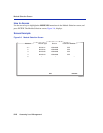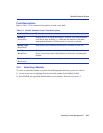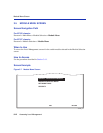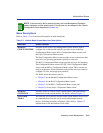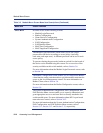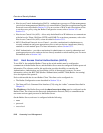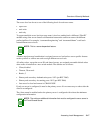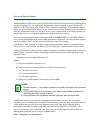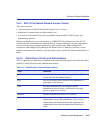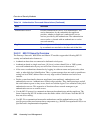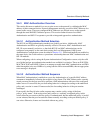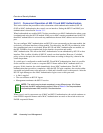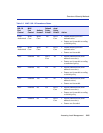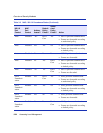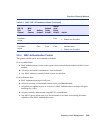
Overview of Security Methods
3-18 Accessing Local Management
When the Radius Client is active on the switch module, the user is presented with an authorization
screen, prompting for a user login name and password when attempting to access the host IP
address via the local console LM, Telnet to LM, or WebView application. The embedded Radius
Client encrypts the information entered by the user and sends it to the Radius Server for validation.
Then the server returns an access-accept or access-reject response back to the client, allowing or
denying the user to access the host application with the proper access level.
An access-accept response returns a message USER AUTHORIZATION = <ACCESS LEVEL>
for 3 seconds and then the main screen of the application is displayed. An access-denied response
causes an audible “beep” and the screen to return to the user name prompt.
If the Radius Client is unable to receive a response from the Radius Server, because the Radius
Server is down or inaccessible, the Radius Client will time out to a default value of 20 seconds.
If the server returns an “access-accept” response (the user successfully authenticated), it must also
return a Radius “FilterID” attribute containing an ASCII string with the following fields in the
specified format:
“Enterasys:version=V:mgmt=M:policy=N”
Where:
V is the version number (currently V=1)
M is the access level for management, one of the following strings:
“su” for super-user access
“rw” for read-write access
“ro” for read-only access
N is the policy profile number (see the policy profile MIB)
If the Radius client does not receive a response from the primary server, it will consult the
secondary server if one has been configured. If the secondary server also does not respond then the
switch module reverts to the last-resort authentication action. Last-resort authentication is
individually selectable for both local (COM port) and remote (TELNET or WebView). The
last-resort action may be to accept the user, reject the user, or challenge the user for the Local
Management passwords (resort to legacy authentication).
NOTES:
1. Quotation marks (“ ”) are used for clarification only and are not part of the command
strings.
2. If the FilterID attribute is not returned, or the “mgmt” field is absent or contains an
unrecognizable value, access is denied.
3. Policy profiles are not yet deployed and the “policy=N” part may be omitted.



